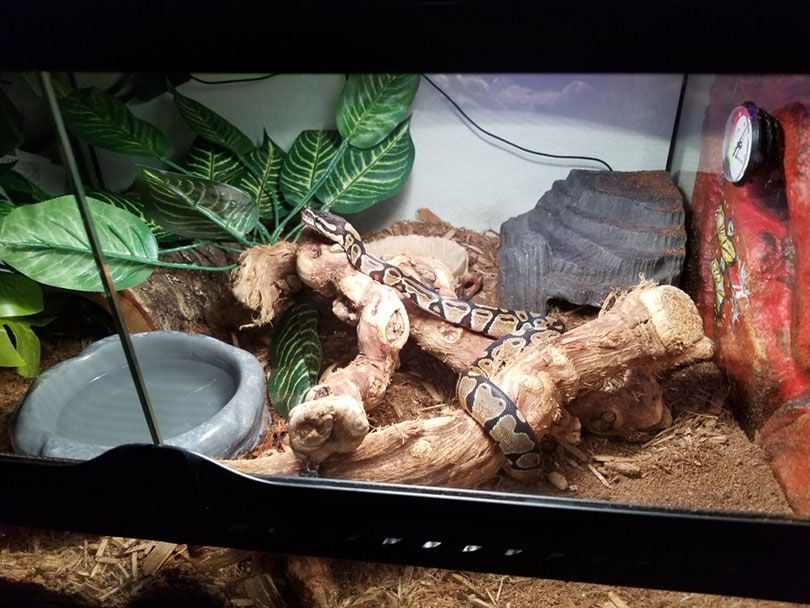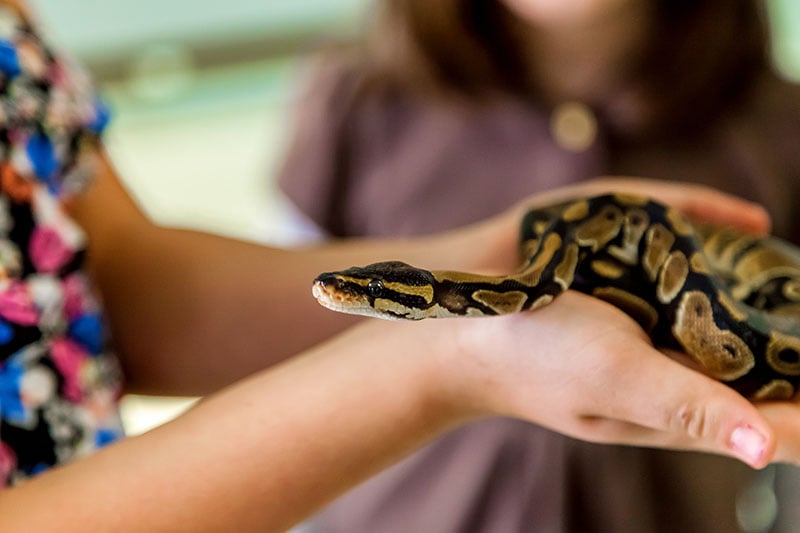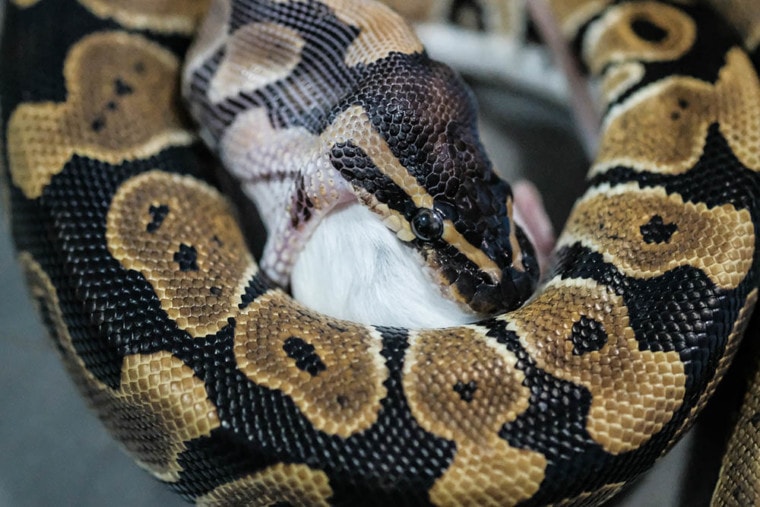
You might think that both pet and wild ball pythons have a pretty straightforward and similar diet, but do you know the differences? Naturally, what your ball python eats in the wild will be different from how they get food as pets, but the menus do overlap a bit. In the wild, a ball python will eat small animals like rodents, shrews, and birds.
Domesticated ball pythons are handed meals on silver platters, while wild snakes really have to work for their meal. Let’s learn how ball pythons hunt and what they eat when they aren’t housed in a glass tank.
Ball Python Origin
Ball pythons have grown in popularity—and many breeders have dealt their cards creating morphs that are too cool for school. Even though ball pythons are one of the most popular snake choices for reptile lovers all over, their natural roots tell a different story.
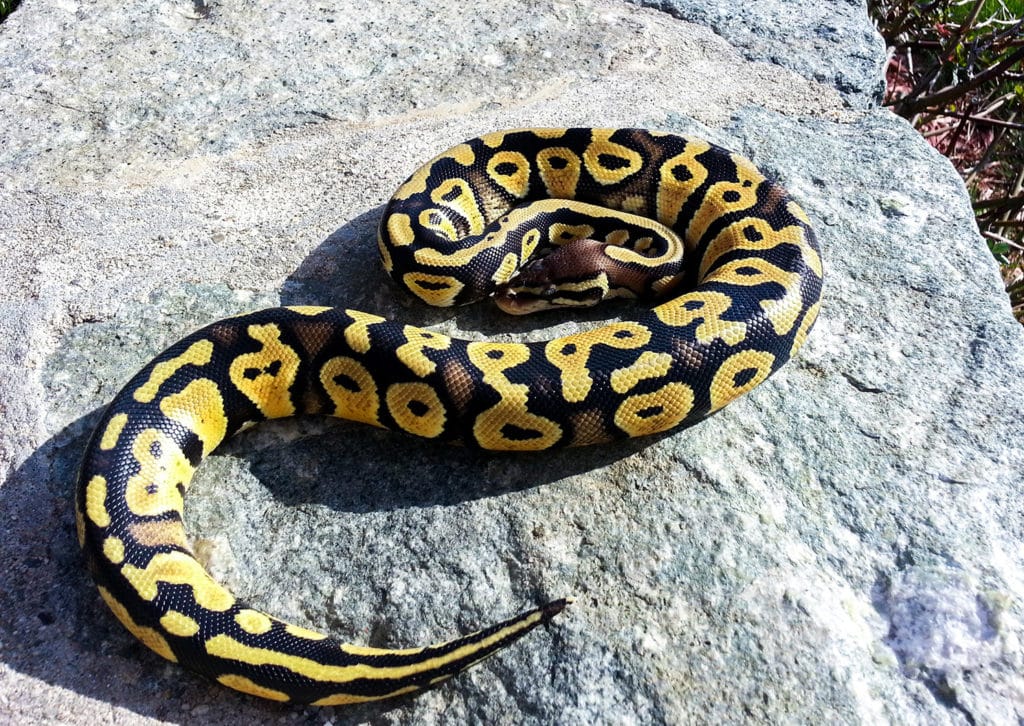
Habitat
Ball pythons are native to West Africa, thriving in wetlands, thin woodlands, and savannas. They need an environment that will nourish their scales, keeping them soft to shed naturally.
- Related Read: Scaleless Ball Python: Pictures, Facts, & Care Guide
Generally, ball pythons hang out next to a water source, so it is plentifully available to them at all times. They use the water to regulate their body temperature. Also, they like to stay tucked out of sight, steering clear of any predators nearby.
Natural Diet
A ball python’s natural diet consists of small rodents, shrews, and birds. They eat roughly every week or two in the wild, but it can be more or less depending on the available opportunities.
- Read Also: 9 Snakes That Don’t Eat Mice & Other Rodents
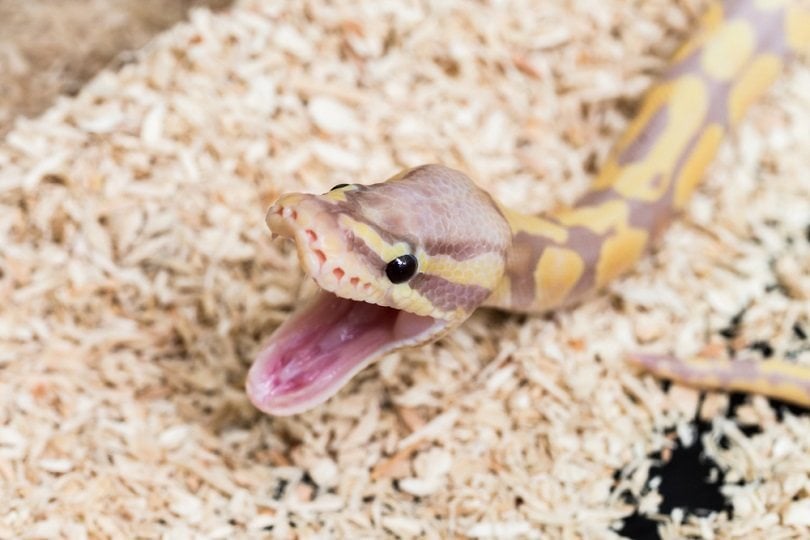
Predatory Concerns
Even though snakes are fierce predators themselves, that doesn’t mean they’re safe from all. Ball pythons have quite a few natural predators to mention, such as:
Even humans can technically be predators to ball pythons. We invade their natural habitats, and some capture them for the snake trade. In any case, we are to blame as well for population disruption.
Wild Ball Python vs. Domesticated Python Diet
Even though the diet will be roughly the same between wild and domesticated ball pythons, there are some notable differences.
Feeding Method
Your domesticated ball python has a great advantage over its wild cousins. They get meals literally dropped in front of them to enjoy. Wild pythons, on the other hand, have to work for their food. Wild ball pythons will stalk their prey and strike aggressively.
Domesticated snakes still have the instinct to strike, but they never have to travel far for their meal. Whether you feed live or frozen, your snake has to sniff out the mouse for consumption. If you provide frozen rodents, make sure they are completely thawed.
Also, never microwave any frozen rodents. It would be best if you allowed them to thaw without extreme temperatures. Microwaves cook from the inside out so rodents can explode in your microwave. Or worse—it can scald the inside of your snake, ultimately leading to death.
- Read Also: Do Ball Pythons Recognize Their Owners?

Dietary Differences
Ball pythons in the wild are opportunistic eaters, meaning they aren’t confined to eating rodents only. Some wild ball pythons will also delight in amphibians, shrews, small birds, and other rodents. It all depends on what’s available to them in the area.
Domesticated ball pythons should eat a diet of fuzzy, pinkie, medium, large, or jumbo rats and mice—depending on their life stage. You can feed your ball python live or frozen mice, but keep in mind that they may reject frozen foods after you introduce live mice.
It would help if you never fed a ball python local rodents, however. Even though they eat these food sources in the wild, that isn’t the same as providing them with a mole from the backyard. Outdoor critters could contain diseases or pesticides that could make your snake very sick.
- You may want to read this next: Monsoon Ball Python Morph
Final Thoughts
When it comes to wild versus domesticated ball pythons, each one eats differently—but there are many overlapping similarities, too. Just remember that even though wild ball pythons eat local rodents and wildlife, that doesn’t mean your pet can. Wild-caught rodents can cause illness or even death.
It’s best to consistently feed your carnivorous snake a diet of domesticated rodents for optimal health and satisfaction.
- You may also be interested in: Firefly Ball Python Morph
Featured Image Credit: Creative Stock Studio, Shutterstock



